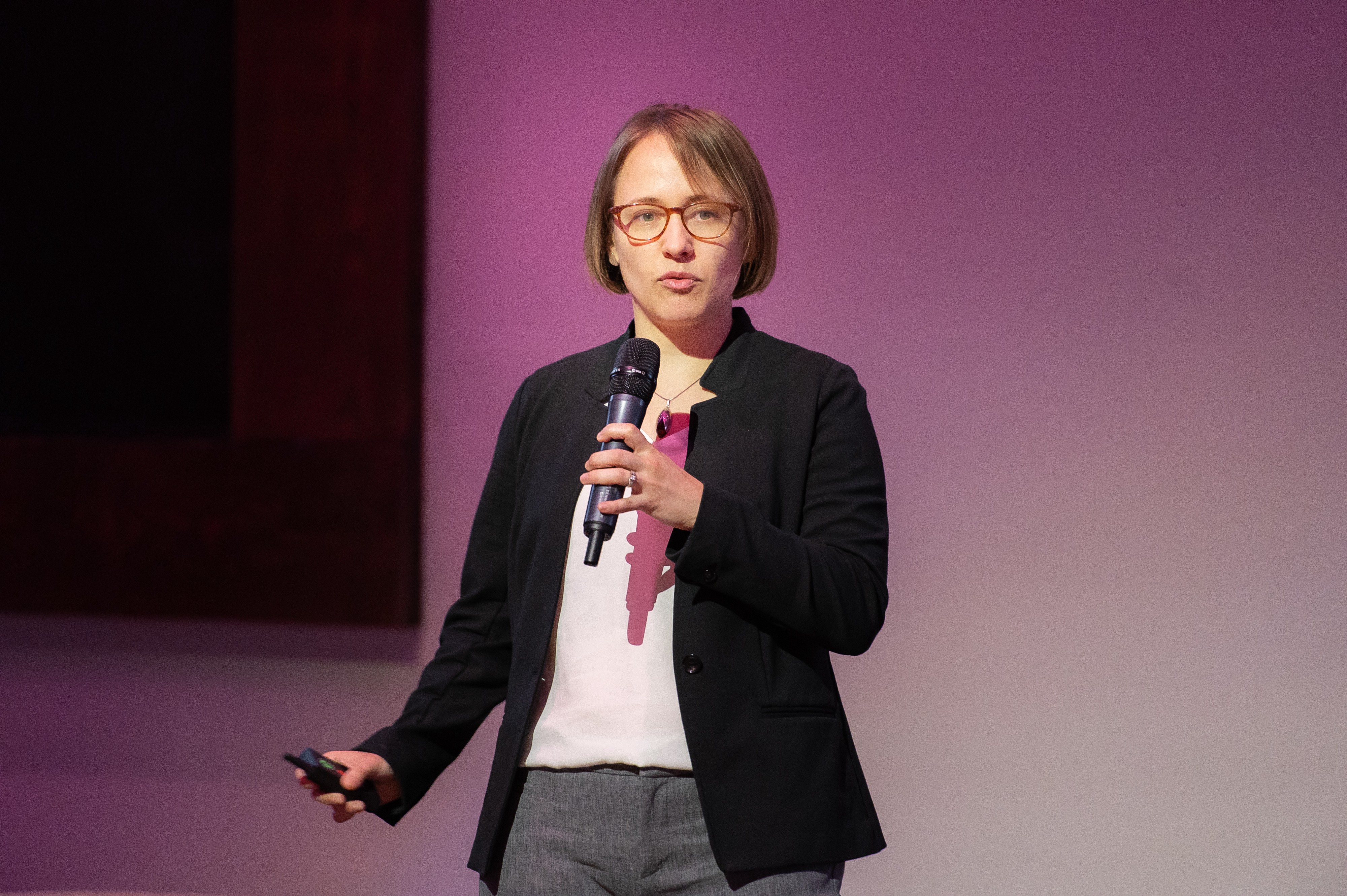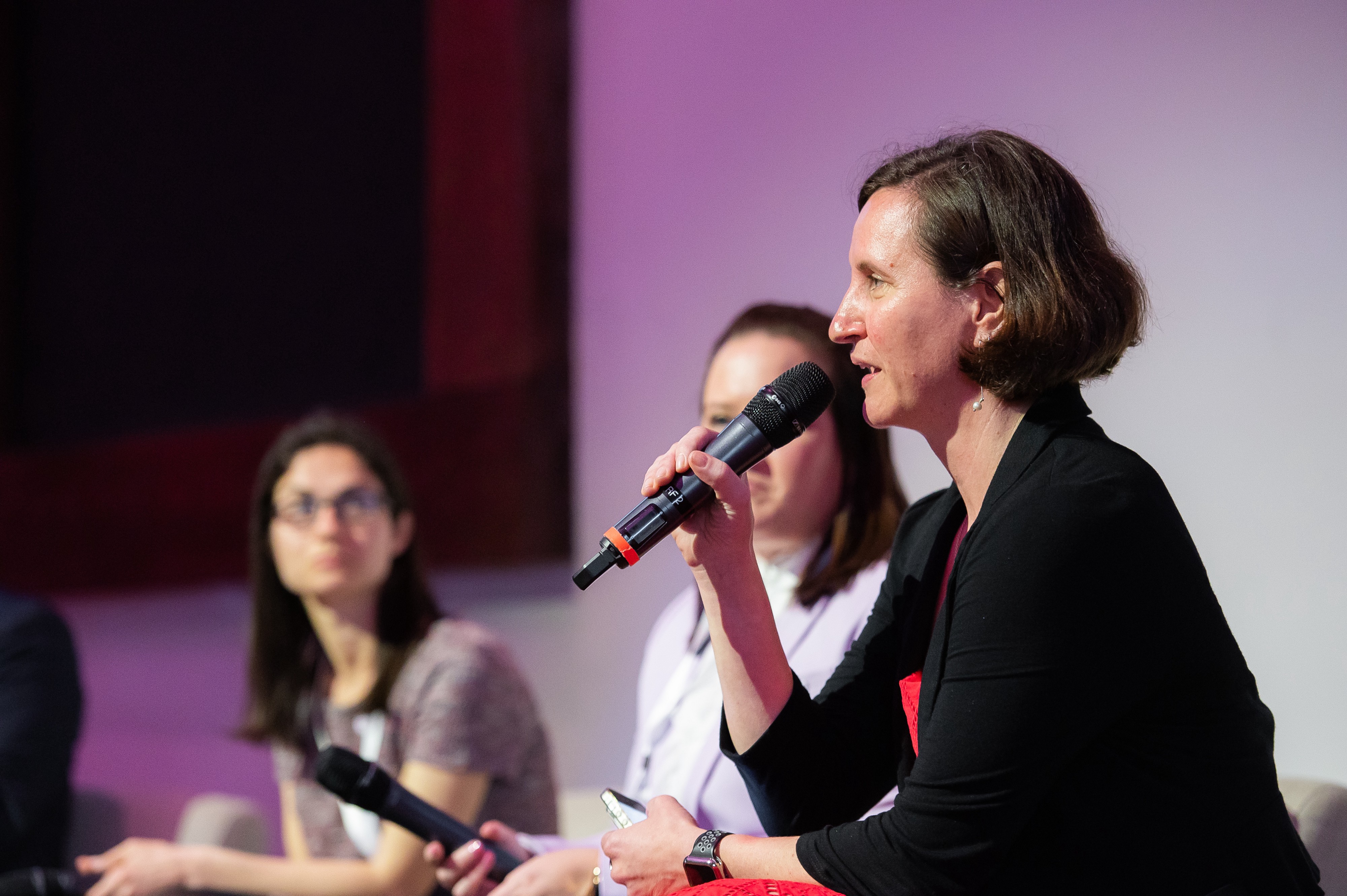
Our 3rd annual Future of Obstetrics summit was a huge success, bringing together all the stakeholders in the field — payers, providers, innovators, investors, and health experts — to discuss how collaboration is critical to improving maternal health in the United States. Here are some key takeaways from each session.
Interested in more information? Reach out to us at info@babyscripts.com.
What’s On Our Health Systems’ Minds? Market Insights from AVIA
The conference kicked off with Kathryn Austin from AVIA sharing three important insights into the mind of health systems and the takeaways:

1. The incumbent has the advantage in digital innovation — capitalize on your strengths and plan for scalability from the start.
2. Viewing the patient as consumer is key to staying relevant — be transaction-ready to retain and grow commercial share.
3. Collaboration is essential to scale solutions for vulnerable populations — marry digital solutions with care models to make an impact.
Payers and Providers: Working Together to Improve Maternal Health

In a panel covering the need for collaboration to improve care, speakers agreed on several essential steps to resolving the tensions between the traditional competitors of payer and provider. Conflicting incentives and goals are partially to blame for the conflict. One solution? Put the patient’s needs at the center of care to motivate the alignment of interests and incentives, and encourage a trust relationship between payer and provider.
The ROI of Schedule Optimization: A Penn Medicine Case Study

Outcomes from a Penn Medicine research study on schedule optimization validated a new model for prenatal care, and left attendees with a few important takeaways: although ROI takes about 9 months to gestate; tracking metrics, adjusting, and recalibrating should be happening throughout implementation, in real time, to avoid inefficiencies and redundancies.
The Maternal Health Crisis: A Public Health Perspective from Washington, DC
 Karen Dale RN MSN (AmeriHealth Caritas DC), Loral Patchen CNM PhD (MedStar Health), Nancy Gaba, MD, FACOG (George Washington University) and Andrey Ostrovsky, MD (Solera Health)
Karen Dale RN MSN (AmeriHealth Caritas DC), Loral Patchen CNM PhD (MedStar Health), Nancy Gaba, MD, FACOG (George Washington University) and Andrey Ostrovsky, MD (Solera Health)Health changers from Washington DC took up the problem of maternal mortality, identifying some of the major misconceptions around the issues:
- It’s not just an issue of access: minority women in particular are intimidated by the system and reluctant to spend time with their care teams. Compounded with social determinants of health like food insecurity, the chronic stress this induces deters women from seeking care.
- Partnerships can provide solutions: setting their differences aside, payers and providers need to align their vision to focus on patients, listening to each other and sharing data to determine the most effective allocation of care.
- Pregnancy outcomes don’t start and end with medical care: nutritionists, social workers, lawyers, community leaders, and others can all have an impact in the life and wellbeing of mother and child, especially those dealing with challenges of domestic violence, drug addiction, housing or food insecurity.
How To Scale Digital Health
Scaling digital health at any organization can be a challenging feat, but it will be a requirement for the future of healthcare. The key takeaways from this session:

1. Need to consider the organizational component to get buy in and make change. What are the current technology processes for approval? Who needs to be involved? Make sure to think through these components up front.
2. What is your strategy to engage stakeholders? Consider going bottom up instead of top down.
3. You’ve got one chance to get it right with the doctors, so make sure you are selling it in a language they hear. (i.e. What does each individual care about? How does this align?)
Prioritizing the Fourth Trimester: How Do We Get There?

The Fourth Trimester, de-prioritized in the current model of care, took center stage at the FOB Summit. Speakers addressed ACOG’s changing standards on postpartum care, and how prioritizing the fourth trimester begins with addressing the biggest risks in the postpartum period: isolation, maternal mortality, and gaps in care.
Fireside Chat with Neel Shah, MD
In a fireside chat, Neel Shah, MD weighed in on the fact that surviving pregnancy should be the floor, and that we need to design care that shoots for the ceiling. One big step is better care coordination between obstetrician and primary care provider. Right now, this doesn’t exist.

Leveraging Innovation Effectively: Who is Doing it Right and How?

Innovation and its impact on care was also an important issue. Speakers were particularly excited to see how innovative solutions like Babyscripts are breaking down the walls between specialized women’s health fields, redefining the paths to women’s health to avoid siloed care and presenting a comprehensive solution. The conversation revolved not around the ability of digital tools to replace human agents, but how both can be used to positively impact outcomes.

The Venture Game: How Can Investors Focus on Improving Care for Moms in the US?
Investors weighed in with advice for achieving funding. The venture view? Partnerships are key. Creating barriers to competitive entry in the space — like a platform that joins payers, patients, providers, and other important stakeholders in maternal health — originates a virtuous cycle that is compelling to investors.
Our summit showed that we are making some impressive strides toward solving the problems of maternal health, and patients are at the center of it all. The kinds of collaborations and conversations happening at our summit are essential to speeding the pace of progress, until all mothers can give birth in safety and security.

Babyscripts is the first pregnancy app to be developed with and for providers. You can read more about our clinical partnerships and our value proposition here.

Submit a comment